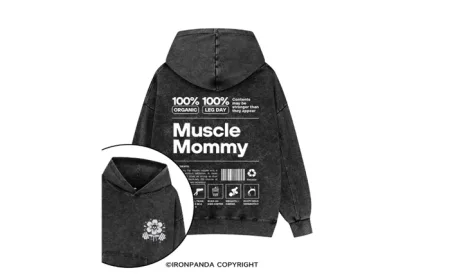When it comes to fashion, sustainability is becoming an increasingly important topic. The fashion industry is known for its environmental impact, with textiles production being one of the most significant contributors to pollution and waste. However, with the rise of eco-friendly and sustainable fashion, consumers are becoming more aware of the impact their clothing choices have on the environment. One way to support this movement is by buying sustainable fabrics. In this article, we will look at the importance of supporting eco-friendly fashion by buying sustainable fabric.
As the fashion industry continues to grow, so does its impact on the environment. Textile production is responsible for a significant portion of pollution and waste, leading to concerns over the sustainability of the industry. The good news is that eco-friendly and sustainable fashion is on the rise, with more and more consumers realizing the importance of making environmentally conscious choices in their shopping habits.
One way to support this movement is by buying sustainable fabrics. These materials are produced using methods that have a minimal impact on the environment, from the sourcing of raw materials to the manufacturing process. This can include using organic cotton, recycled polyester, or natural fibers like bamboo and hemp.
By choosing sustainable fabrics, consumers can help to reduce the environmental impact of the fashion industry. This includes conserving water and energy, reducing greenhouse gas emissions, and limiting the use of harmful chemicals. Additionally, sustainable fabrics often have a longer lifespan and can be recycled or repurposed, further reducing waste.
Overall, supporting eco-friendly fashion by buying sustainable fabrics is an important step towards creating a more sustainable and ethical fashion industry. Whether you are a fashion lover or just someone who wants to make a positive impact on the environment, choosing sustainable fabrics is a simple but effective way to do your part.
What is Sustainable Fabric?
Sustainable fabrics are those that are made with minimal impact on the environment, and often have lower carbon footprints than traditional textiles. The production of sustainable fabrics uses fewer resources and chemicals, and is often done in a way that reduces waste and pollution. Examples of sustainable fabrics include organic cotton, bamboo, hemp, linen, and recycled polyester.
Sustainable fabrics are becoming more and more popular as people become increasingly concerned about the impact their choices have on the environment. These fabrics are made from materials that are renewable, biodegradable, or recycled, and are produced using eco-friendly processes. The use of sustainable fabrics not only benefits the environment, but also supports ethical and fair labor practices. By choosing sustainable fabrics, consumers can make a positive impact on the planet, while still enjoying high-quality, stylish clothing.
The Benefits of Sustainable Fabric
There are numerous benefits to using Ethical Elements sustainable fabrics in fashion. Firstly, sustainable fabrics are better for the environment. They are made in a way that reduces pollution and waste, and often use fewer resources than traditional textiles. This means that they have a lower carbon footprint, and are less damaging to the planet.
Additionally, sustainable fabrics can also have benefits for the people involved in their production. Many sustainable fabrics are produced using fair labor practices, meaning that workers are paid fairly and work in safe and healthy environments. This helps to support local communities and can have positive social impacts.
Moreover, sustainable fabrics can also be of higher quality than traditional textiles, and may be more durable and long-lasting. This can help to reduce waste and promote a more sustainable and responsible approach to fashion.
Overall, using sustainable fabrics in fashion is an important step towards creating a more environmentally and socially responsible industry. By choosing sustainable fabrics, they can help to reduce our impact on the planet and support a more sustainable and ethical approach to fashion.
How to Buy Sustainable Fabric?
If you are interested in supporting eco-friendly fashion by buying sustainable fabric, there are a few things you can do to ensure that the fabrics you are buying are truly sustainable. Firstly, look for fabrics that are certified as organic or sustainable. This means that they have been produced in a way that meets certain environmental and ethical standards.
These certifications can be found on the product label or packaging. Secondly, consider the production process of the fabric, such as the amount of water and energy used, and whether harmful chemicals were used in the manufacturing process. Lastly, try to choose fabrics that are made from natural fibers, as these are biodegradable and have a lower impact on the environment. By taking these steps, you can support the growth of eco-friendly fashion and help reduce the environmental impact of the fashion industry.
The Future of Sustainable Fashion
The rise of sustainable fashion is a positive step towards a more environmentally-friendly fashion industry. However, there is still much work to be done to ensure that sustainable practices become the norm rather than the exception. Brands and consumers alike need to continue to push for change and demand more sustainability in the industry.
Sustainable fashion has seen a significant rise in popularity as consumers become increasingly aware of the impact the fashion industry has on the environment. It is encouraging to see more and more brands incorporating sustainable practices into their production processes. However, there is still a long way to go to make sustainable fashion the standard. Both brands and consumers have a crucial role to play in this movement. Brands must prioritize sustainable practices and make them an integral part of their business models. Consumers must demand more transparency and sustainability from brands and be willing to choose eco-friendly options when shopping. Only through joint efforts can we create a more environmentally-friendly and socially responsible fashion industry.



